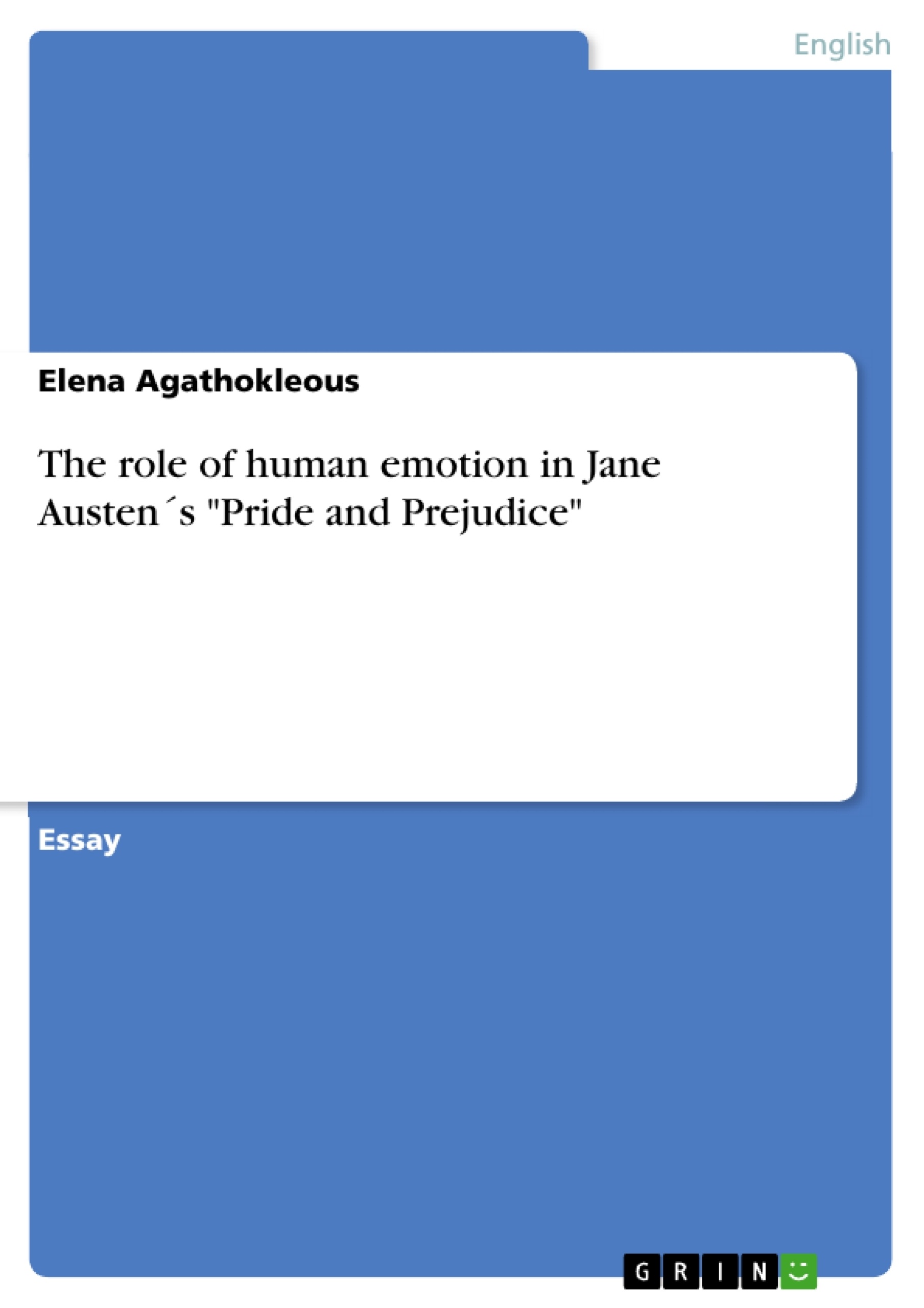Taking into consideration the time during which Pride and Prejudice was written one could say that it was certainly not a time that emotions played a primary role in people’s lives and life decisions. The novel was first published in 1813, at a time when people were mostly concerned over property, money and their social status and how to rise in a better position, secure the family’s place in society and their wellbeing or maintain their current wealth and social standing. At the time of such concerns strict laws defined how money and land would be inherited and protected from a wider distribution than the relatively few wealthy that had it. Males were most secure since they were allowed to inherit; they obtained their wives’ inheritance if they came from wealthy families and had all legal rights both on the money but also on the wives themselves.
Inhaltsverzeichnis (Table of Contents)
- The role of human emotion in Pride and Prejudice
- Introduction
- Historical Context
- The Importance of Social Standing
- The Influence of Emotion in the Novel
- The Bennet Family
- Women's Aspirations
- The Relationship between Elizabeth and Darcy
- The Role of Sentiment in the Novel
- Mrs. Bennet's Character
- Charlotte Lucas's Decision
- Lydia's Choice of Husband
- Wickham's Character
Zielsetzung und Themenschwerpunkte (Objectives and Key Themes)
This essay examines the role of human emotion in Jane Austen's novel "Pride and Prejudice," considering the historical context of the time period in which it was written. The essay explores how social pressures and expectations, particularly regarding marriage and social status, influenced the characters' emotional experiences.
- The Influence of Social Expectations on Romantic Relationships
- The Conflict Between Pride and Prejudice
- The Significance of Class and Inheritance
- The Complexities of Female Agency and Independence
- The Evolution of Love and Understanding
Zusammenfassung der Kapitel (Chapter Summaries)
The essay begins by exploring the historical context of the novel, highlighting the importance of social standing and financial security in 19th-century England. The author argues that emotions, especially those related to love and passion, were often suppressed in favor of pragmatic considerations. The essay then delves into the Bennet family, focusing on the pressures faced by the daughters to secure advantageous marriages. The author examines Elizabeth Bennet's struggle to balance her own aspirations with societal expectations, showcasing her independent mind and intellectual capacity.
The essay further analyzes the complex relationship between Elizabeth and Mr. Darcy, highlighting the role of pride, prejudice, and social hierarchy in their interactions. The author discusses the development of their feelings, exploring how their initial animosity gradually transforms into a deep and passionate connection. The essay also examines the role of other characters, such as Mrs. Bennet, Charlotte Lucas, and Lydia, illustrating how their choices and motivations reflect the societal norms of the time.
Schlüsselwörter (Keywords)
This essay examines the themes of love, marriage, social class, gender roles, pride, prejudice, and emotional complexity in Jane Austen's "Pride and Prejudice." The essay explores how these themes interact and influence the characters' decisions, relationships, and ultimately, their personal growth and development.
- Arbeit zitieren
- Elena Agathokleous (Autor:in), 2019, The role of human emotion in Jane Austen´s "Pride and Prejudice", München, GRIN Verlag, https://www.hausarbeiten.de/document/1007717



